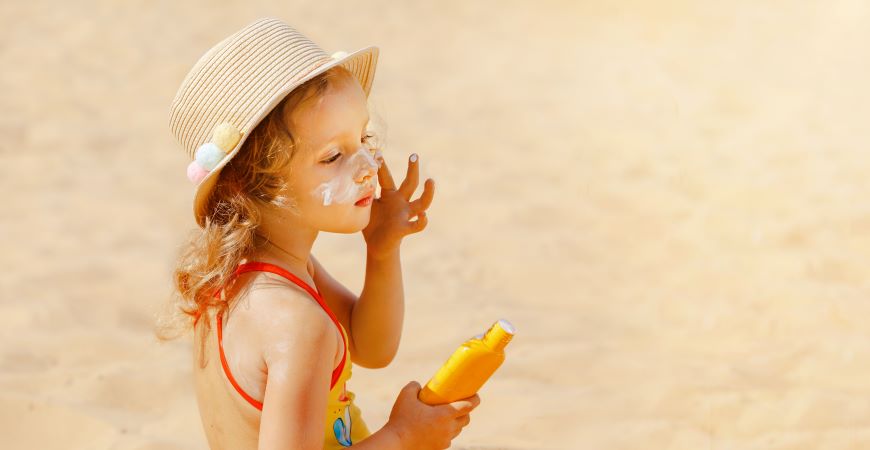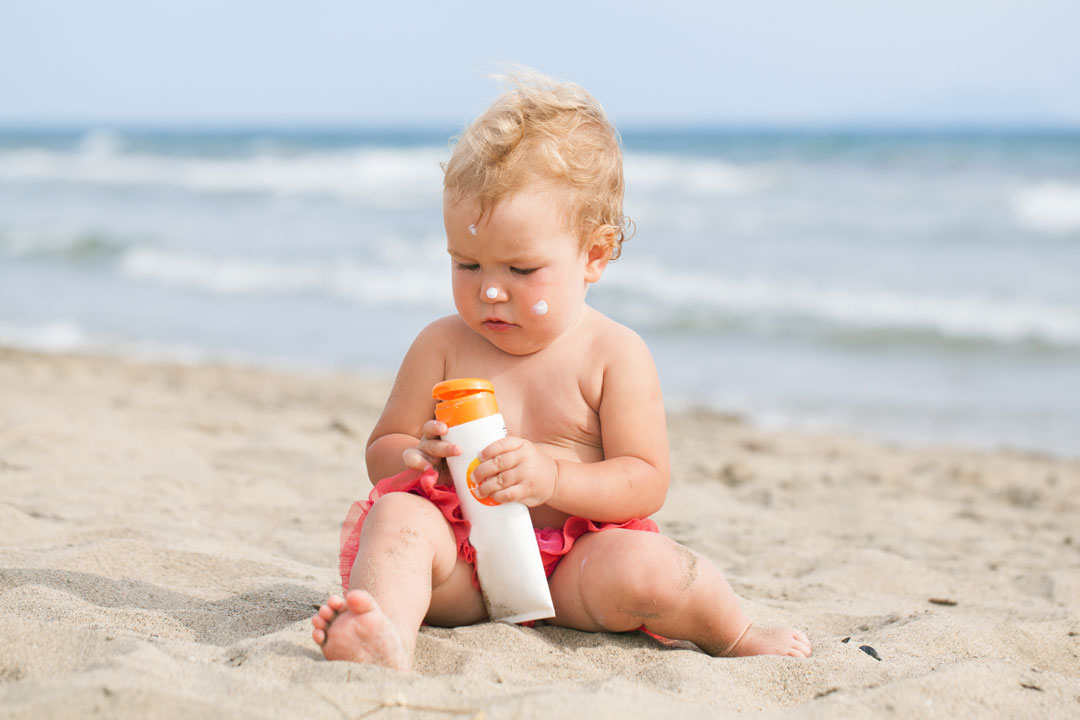Going outside for a walk with your baby can benefit you and your little one. The fresh air and the gentle movement of the stroller can calm your baby and even lull them to sleep. But many parents often forget to apply sunscreen on their baby before heading out.
Since your baby’s skin is extra sensitive, it is necessary to protect it from severe burns, and a reliable sunscreen can help you do that.
However, not all sunscreens will end up shielding your baby’s skin. The ones with harmful chemicals and ingredients can aggravate any rash or even lead to skin infections, so paying attention to the sunscreen’s ingredients before purchasing is necessary.
Safe Sunscreen Ingredients for Kids
Sunscreen components can either make or break the deal. The right ingredients can protect your child’s skin, while the harmful ones can irritate it.
Let’s look at ingredients that make sunscreens safe for babies.
1. Zinc Oxide
Several guidelines have been framed regarding sunscreen safety. For example, the Federal Food and Drug Administration concluded that zinc oxide and titanium dioxide are safe and effective sunscreen ingredients.
Zinc oxide blocks the UVA and UVB rays responsible for causing skin damage, burns, and skin cancer. The presence of zinc oxide ensures the scattering of the sun’s rays which prevents the UV radiation from reaching the skin.
The sunscreens with zinc oxide are known as “physical” sunscreens since they sit on top of the skin and block the rays.
Such sunscreens are resistant to water, allowing your little one to play in the pool without worrying about sun damage.
You will find many sunscreens with zinc oxide. Our favorite is the Aveeno Baby Continuous Protection Sensitive Skin Zinc Oxide Sunscreen. Since this mineral sunscreen is made with naturally-source zinc oxide, you will not have to worry about damaging your baby’s sensitive skin. Moreover, it is sweat and water-resistant, making it more long-lasting.
2. Titanium Dioxide
Similar to zinc oxide, titanium dioxide is also found in mineral-based sunscreens. It is also known as physical sunscreen since products with this ingredient sit on the skin and reflect the harmful UV rays away from it.
Sunscreens with titanium dioxide are known to prevent sun damage and sunburn. They effectively block UVB and short-wave UVA rays to protect your baby’s sensitive skin.
As titanium dioxide is non-comedogenic, you need not worry about it damaging your baby’s skin. Instead, it will gently sit on the skin and protect it from the harmful UV rays.
3. Mexoryl SX
Mexoryl SX is a newer sunscreen ingredient that helps protect the skin from harmful UVA rays.
This synthetic organic compound is a renewable and photostable filter. In other words, it will provide long-lasting protection without losing its effectiveness when exposed to the sun.
Several studies have also concluded that the presence of Mexoryl SX improves the effectiveness of sunscreen, especially on sensitive skin. Additionally, it has more water resistance than other conventional filters, making such sunscreens more long-lasting.
There are several other crucial ingredients that you must look out for in your baby’s sunscreen, like Octinoxate, Avobenzone, PABA, etc. But it is best to give priority to the ones with zinc oxide and titanium dioxide.
Ingredients to Avoid in Sunscreens for Babies
On the other hand, you must steer clear of sunscreens with the following ingredients as they can potentially cause severe harm to your baby’s sensitive skin:
1. Oxybenzone
Oxybenzone is the most harmful sunscreen ingredient as it can cause skin allergies and irritate your baby’s eyes. Studies show that it interrupts the endocrine system, which is responsible for biological processes like growth, metabolism, etc.
2. Octocrylene
Similarly, Octocrylene is known to cause skin allergies. While sunscreens with this ingredient might work on adult skin, they should be avoided for babies.
3. Avobenzone
Sunscreens with Avobenzone should also be kept at arm’s length as this ingredient does not react well when exposed to sun or chlorine. Instead of protecting the skin, it turns toxic and releases harmful free radicals.
Apart from the aforementioned ingredients, you must avoid sunscreens with Octinoxate, Octisalate, Homosalate, etc. While they fall in a gray area, and the research is ongoing, your child’s skin is not supposed to be exposed to something even remotely harmful.
How to Choose the Best Baby Sunscreen?

Apart from the ingredients, there are a few factors that you must look out for to help you get your hands on the best baby sunscreen.
1. Choose the sunscreens specifically made for a baby’s sensitive skin. This will help prevent any rashes or irritation.
2. Opt for “broad spectrum” sunscreens as they protect against UVA and UVB rays.
3. It is better to side with mineral-based sunscreens for babies as such options will reflect the sun rays and protect the skin.
4. Look for sunscreens that are water and sweat-resistant.
5. The ones with SPF 30-50 are the most useful in protecting your skin’s sensitive skin.
6. Stay away from the sunscreens filled with harmful chemicals like paraben and phthalate.
Conclusion
Finding the perfect baby sunscreen is just the first step. It is equally important to apply it regularly (at least after every 2 hours), especially if your baby is outdoors.
While sunscreens can be applied to a baby’s skin, the best protection can be achieved by keeping your child completely away from direct sunlight. It is best to limit sun time between 10 a.m. to 2 p.m for additional protection.
But if you and your baby must go out, apply a reliable sunscreen with favorable and safe ingredients.
































































































































































































